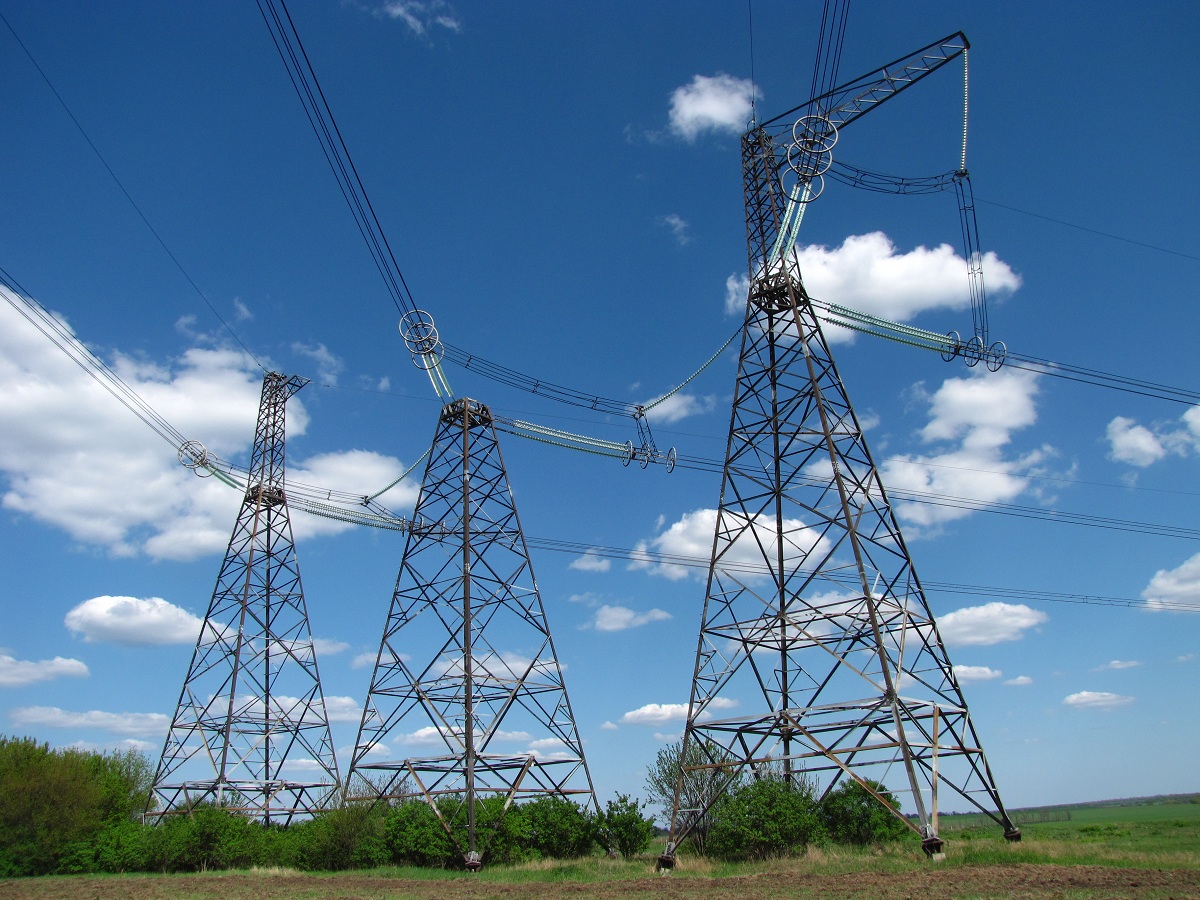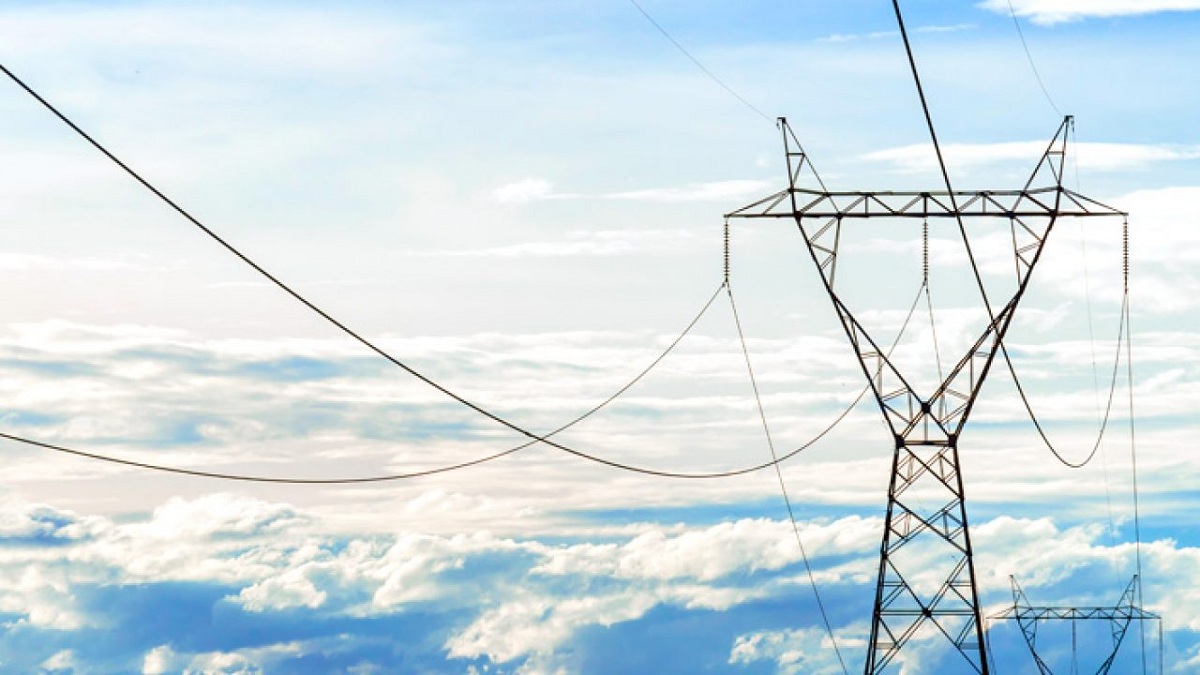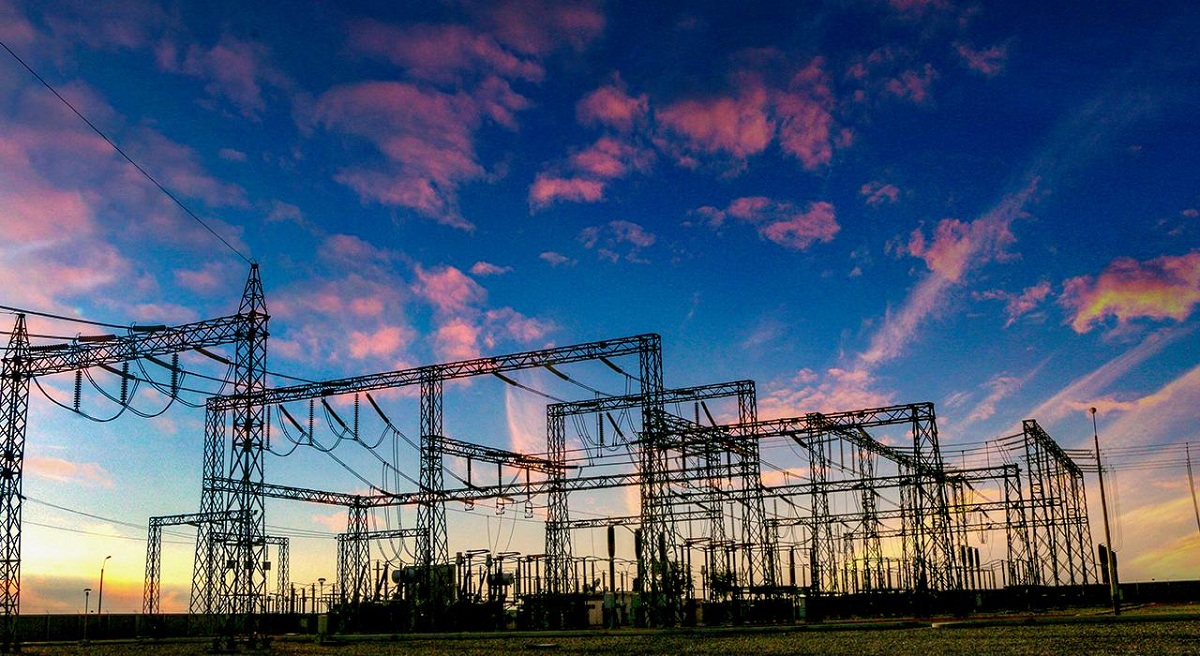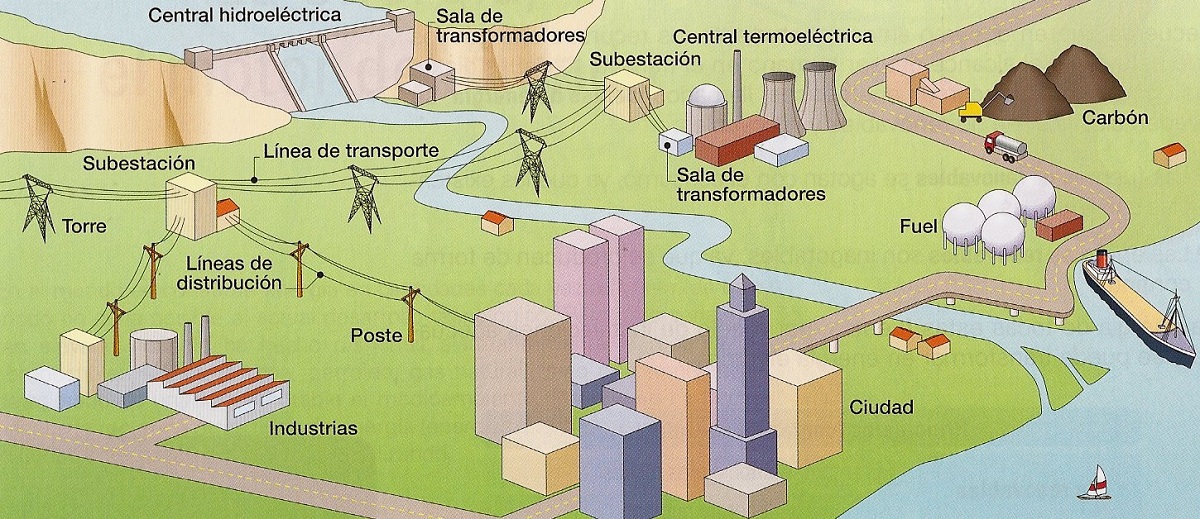
We all know that electricity is generated in power plants. What is not talked about so much is transportation of electrical energy. Electric transport allows the transfer of energy produced by factories to consumption centers. In other words, it is the path that electricity takes from generation to distribution.
In this article we are going to tell you what the transport of electrical energy is, how it is carried out and what its importance is.
Transport of electrical energy

Electric power is transmitted through high voltage transmission lines, which together with the substations form the transmission network. To transmit electricity with as little energy loss as possible, it is necessary to increase its voltage level. Transmission lines or high voltage lines are made up of conductive elements (copper or aluminum) and support elements (high voltage towers). These, once their voltage to the distribution network is reduced, conduct electricity over long distances.
The transmission network is meshed, which means that all the points are connected to each other, and if there is an accident somewhere, the energy supply is guaranteed because the energy can come from another line. In addition, the transmission network is controlled remotely, that is, faults can be detected and isolated from the control center.
The high voltage unit (AT) is in charge of transporting electricity from the plant to the substation. For safety reasons, high voltage cables are buried or located on power poles on the outskirts of city centers.
The regulations establish that any voltage greater than 1 kV is considered AT, although the electricity companies have established other differences or denominations:
- transportation facilities (special category): installations with a voltage greater than or equal to 220 kV and with a lower voltage that are part of the transmission network (for example, on islands, consider the 66 kV network as transmission).
- High voltage distribution networks (categories 1 and 2): less than 220 kV and more than 30 kV
- Medium voltage distribution network (category 3): between 30 kV and 1 kV.
Where is the transport of electrical energy regulated?

The power transmission network consists of a primary transmission network and a secondary transmission network. In addition to distinguishing according to the different voltages of each network, the primary transmission network also includes those other international interconnections and, where appropriate, the interconnections with the non-territorial electrical system. Other network assets, such as buildings and other auxiliary elements, electrical or not, are also part of the transport network.
The transport of electricity mainly regulates the electricity sector in Chapter VI of Law 24/2013, of December 26, which establishes which facilities will be integrated into the network, the requirements to regulate the network integration plan to allow the remuneration of the new facilities to be recognized and includes the functions that the carrier must perform.
Likewise, in terms of safety, it is also necessary to cite Law 21/1992, of July 16, on Industry, which establishes that the safety standards will determine the requirements of the installation, the responsibilities of the owner and the technical competence. The law also defines the characteristics of the control bodies and entities that must carry out the inspections.
In all of the above, it is necessary to take into account Royal Decree 223/2008, of February 15, by which approves the regulation on technical conditions, and Royal Decree 1955/2000, of December 1, establishing other extreme transportation activities between.
The regulation establishes that the T&D companies will be responsible for the execution, maintenance and verification of the lines they own, as well as the surveillance of the high-voltage lines that are not owned by the T&D companies, and the law creates installers digital and installation companies.
What is Red Eléctrica de España?

The Electricity Sector Law establishes that Red Eléctrica de España, SA will carry out this activity as the sole operator and currently owns all the high-voltage lines. However, the law allows the government to make certain secondary transportation facilities, due to their characteristics and functions, owned by concessionaires in specific areas.
The main shareholder of the company is Guotong Industrial Participation Company (SEPI), which owns 20% of the shares. The remaining 80% is freely traded on the stock market. The peculiarities of the company are mainly regulated by Law 54/1997, of November 27, in particular its additional article 23.
Remuneration for this activity is based on remuneration parameters approved by the National Commission for Markets and Competition (CNMC). It must also submit annual and multi-year investment plans for government approval.
What authorizations are required for transportation facilities?
The start-up, modification, transmission and definitive shutdown of electrical installations are subject to prior compliance with the authorization regime established in the Law and its development provisions.
For the authorization of the transport, distribution, production and direct lines of electrical energy, its originator must fully prove the following (article 53.4 of Law 24/2013, of December 26):
- Technical and safety conditions of the installation and associated equipment.
- Fully comply with environmental conditions.
- Characteristics of the place of installation.
- its legal, technical and economic and financial capacity to execute the project.
The authorizations are granted by the competent authorities in the matter without prejudice to the necessary concessions and authorizations by virtue of other applicable regulations, in particular those related to land use planning and the environment. The lack of a clear resolution will have dismissal effects (additional paragraph 3 of the Electricity Sector Law).
In this sense, it should be noted that, among other regulations, the provisions of this law are established in Royal Decree 1955/2000, of December 1, by which the activities of transportation, distribution, commercialization, supply and procedure of authorized installation of energy are regulated.
What are the obligations of the carrier?
The operator is responsible for the development and expansion of the transmission network to guarantee the maintenance and improvement of the network configured under homogeneous and coherent standards. Among others, their functions include executing maintenance plans, working with the management to evaluate and monitor investment plans, ensure non-discrimination, grant connection licenses or promote the use of energy transmission facilities.
I hope that with this information you can learn more about the transport of electrical energy.